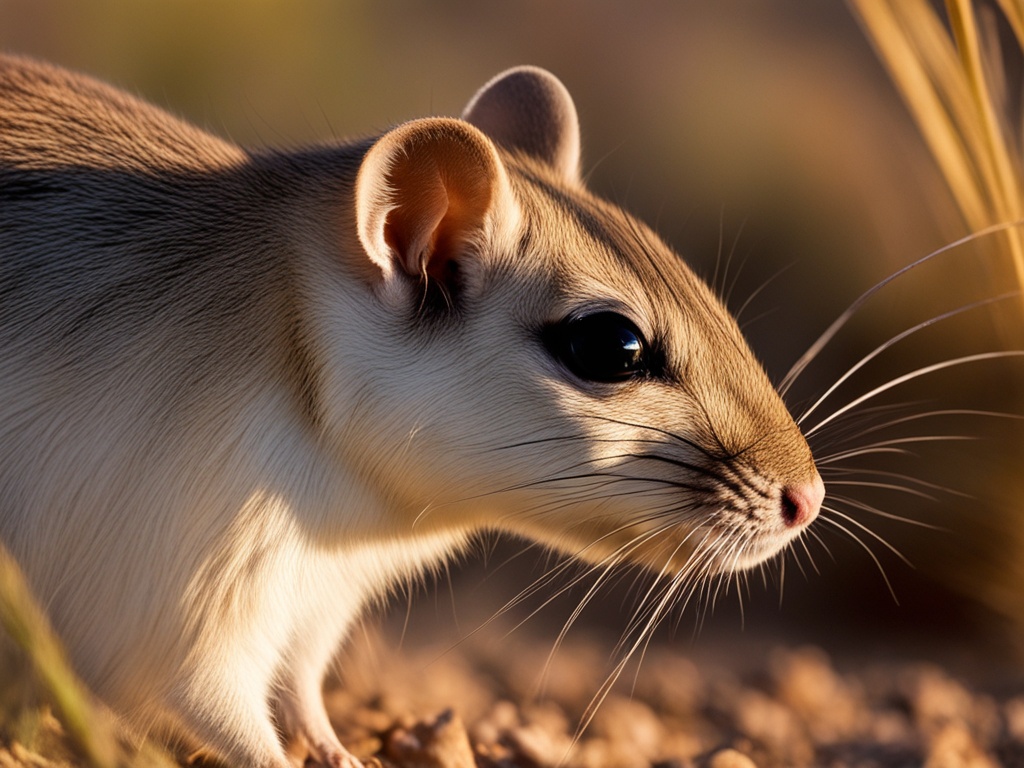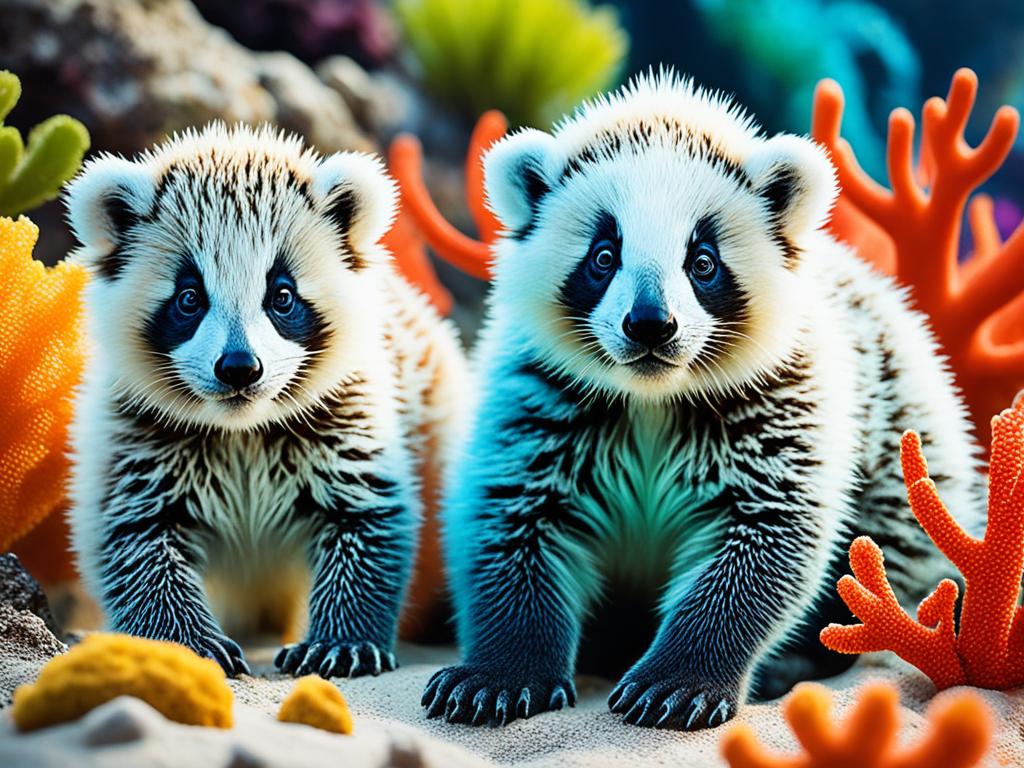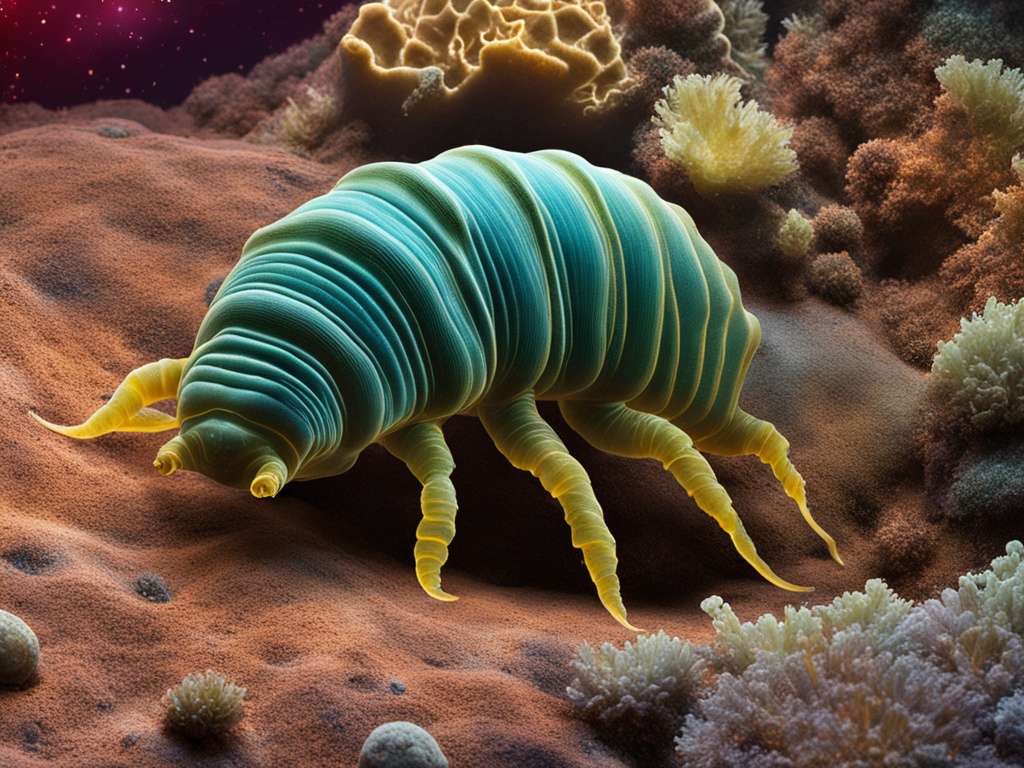Life on Earth shows us how adaptable animals are. They *survive* and *thrive* in the worst situations. These creatures have found ways to live in places where most others wouldn’t survive. They range from hot deserts to icy tundras and the deep sea. What’s more, they’ve developed amazing ways to do this, thanks to their adaptations to extreme habitats.
We will look into how these creatures make do in harsh environments. This includes their amazing evolutionary adaptation mechanisms. We’ll see the clever strategies these animals use to not just survive but actually do well in Earth’s toughest spots.
Key Takeaways
- Animals have evolved a wide range of remarkable adaptations to survive in Earth’s harshest environments.
- From freezing Arctic regions to scorching deserts, animals have developed unique strategies to regulate temperature, conserve water, and even enter states of suspended animation.
- These adaptations are a testament to the incredible resilience and diversity of life on our planet.
- Exploring the ways in which animals have adapted to extreme climates provides insight into the ingenuity of nature and the adaptability of living systems.
- Understanding these survival strategies can inspire new approaches to engineering and technology for challenging environments.
Mastering the Extremes
Animals have evolved many ways to live in the harshest places on Earth. Extreme Climate Adaptation shows us how life is creative and strong.
Surviving Scorching Heat
Deserts are hot but some animals have ways to live there. The kangaroo rat saves water to stay moist. The desert elephant cools off with its big ears. Survival Strategies in Harsh Environments tells us how these animals survive the heat.
Thriving in Freezing Cold
In the coldest places, animals have cool skills too. The wood frog and Antarctic fish keep from freezing with special proteins. They might even take naps to survive the cold. Animal Adaptations to Extreme Temperatures shares their unique survival techniques.
Conquering Harsh Dryness
In very dry spots, animals get smart about saving water. Australian frogs make mucus cocoons to hold in moisture. Adaptations to Extreme Aridity reveals how animals beat drought challenges.
Kangaroo Rats: Desert Survivors
Kangaroo rats, like the Dipodomys merriami, are small but mighty. They live in dry, desert lands and have learned amazing ways to save water. For example, they get all the water they need from eating seeds and mesquite beans. Plus, they make very concentrated urine to not lose water.
Water Conservation Strategies
These animals are experts at living in the desert without drinking water. They get water from their diet of seeds, absorbing even more moisture from their stored seeds. In fact, they can draw out a half gram of water from every seed gram they eat.
Keen Senses and Agility
Kangaroo rats are not just smart about water; they are also very fast and alert. They can jump really high, up to 9 feet, to get away from danger. They use their tail to change direction while jumping. Also, their big eyes and ears are always on the lookout for threats.
Underground Havens
As a way to handle the desert heat, kangaroo rats make their homes underground. These burrows keep them safe and cool. They’re also great for storing food. Additionally, their homes help them save and reuse water because of special features they have.

Arctic Marvels
Animals in the Arctic and Antarctic regions have developed amazing ways to deal with the extreme cold. The wood frog (Rana sylvatica) can freeze most of its body, including its heart and breathing. It then thaws in the spring with no harm. It does this by making a lot of glucose, which stops ice crystals from hurting its cells.
Wood Frogs: Frozen but Alive
The wood frog can handle the severe Arctic winters thanks to its amazing ability. By making plenty of glucose, its cells survive the freezing. This skill lets the wood frog wait out the winter and start breeding in the spring.
Antifreeze Proteins in Antarctic Fish
Antarctic fish like the notothenioids have special proteins in their blood that stop them from freezing. These proteins keep their blood and fluids from turning to ice. It helps the fish live comfortably in the cold oceans.
Caribou’s Winter Resilience
Caribou (Rangifer tarandus) are made for the Arctic winter. They have thick fur and can dig through snow for food. With these adaptations, they are key to the Arctic ecosystem.
Amazing Animal Adaptations to Extreme Environments
Animals have evolved amazing features to live in tough places on our planet. Cuttlefish (order Sepiida) can disguise themselves by changing color and texture. They do this using special cells in their skin. These cells, called chromatophores, can be controlled individually. This lets the cuttlefish match their surroundings perfectly.
Color-changing Cuttlefish
Each cuttlefish has over 10 million cells on their skin for changing color. This feature helps them hide almost anywhere in the ocean. They can rapidly adjust their appearance using their chromatophores. This lets them look like rocks, plants, or many other things around them.
Tubeworms in Hydrothermal Vents
Tubeworms (Riftia pachyptila) survive in deep-sea hydrothermal vents. This is a place with extreme darkness and lots of chemicals. They don’t eat like most animals. They have bacteria inside them that turn toxic gases into food. This amazing partnership allows them to live in a place others can’t.
Pufferfish’s Inflatable Defense
Pufferfish (order Tetraodontiformes) have an extraordinary defense. They can puff up their bodies with water. This makes them much bigger. It also scares off creatures that might eat them. So, pufferfish use this trick to stay safe in their ocean homes.

Desert Elephants
African elephants (Loxodonta spp.) have learned to live well in the hot desert environments of sub-Saharan Africa. They use their big ears to keep cool, which is a key Desert Elephant Adaptation. These ears are full of blood vessels. They help the elephants cool down by increasing blood flow.
Ears as Cooling Systems
The elephants cool down not just with their ears but also by flapping them. This creates its own cool breeze. This ability is vital for them to keep their body temperature stable, living in extreme arid conditions.
Water Intake and Evaporative Cooling
Desert-dwelling elephants have clever ways to save water, even though they need a lot daily. They use some for drinking and some for evaporative cooling to stay cool. Their skills in water storage and use are key for Water Conservation Strategies in arid lands.
Okapi: The Secretive Rainforest Dweller
The okapi is truly unique, living in the lush, tropical rainforests of the Democratic Republic of Congo. Its special features, known as Okapi Adaptations, help it not just survive, but thrive in this tough setting.
Camouflage and Stealth
The okapi’s coat is dark, aiding its Rainforest Camouflage. This allows it to easily disappear into the light and shadows of the forest. The animal moves quietly thanks to sharp hearing, helping it be even more elusive.
Territorial Marking
Scent Marking Behavior is key in the okapi’s life. They use glands on their feet to spread a sticky substance. This marks their areas in the rainforest, helping them keep their space safe.
Infrasonic Communication
Okapi have a special way to talk that we can’t hear called Infrasonic Communication in Animals. It’s used for keeping in touch with their babies silently. This avoids drawing attention from dangerous predators.

Himalayan Jumping Spider
The Himalayan jumping spider is a fascinating spider. It lives in very high places. For example, it’s been found up to 22,000 feet on Mount Everest. That’s where the air is thin, and it’s very cold.
They have great eyes and can jump far. This helps them catch food and live in places where few other animals can.
The Himalayan Jumping Spider can live at 6,700 m (22,000 ft). It lives among rocks, snow, and ice. This spider was first seen living at such heights in 1925.
They can be found at heights from 4,400 m (14,500 ft) to 5,900 m (19,500 ft). But, they don’t look much different from spiders in easier places. This is interesting because usually, animals have special features for living in hard conditions.
The Himalayan Jumping Spider eats flies and springtails. It helps keep the ecosystem going at high altitudes where there are not many plants. In 2014, one was found in India’s West Bengal. This shows they might live at lower heights, too.
| Adaptation | Description |
|---|---|
| High Altitude Adaptation | The Himalayan Jumping Spider lives up to 22,000 feet. This makes them some of the highest living animals on Earth. |
| Extreme Environment Survival | They do really well in the hard conditions of the Himalayas. They can survive where few others can, due to the thin air and cold. |
| Predatory Behavior | With strong eyes and a powerful jump, they catch their food. This helps keep the ecosystem balanced at high altitudes. |
In 1975, F. R. Wanless described the Himalayan Jumping Spider. This was based on a 1954 collection at 5,900 m (19,500 ft). It’s amazing how this spider has adapted to live in such an extreme environment.
Tardigrades: Microscopic Extremophiles
Tardigrades, or “water bears,” are tiny creatures that can survive in very tough places. They are less than 0.04 inches long. When the environment gets too hard, they go into a special sleep. This sleep is called the “tun state.”
Entering the Tun State
When in the tun state, tardigrades can handle very cold and hot temperatures. They can even survive in space. This makes them able to live in places that would kill other animals.
Surviving Extreme Temperatures
Tardigrades have a special protein, Dsup, that protects their DNA from radiation. Scientists are excited about this. They want to see if it can help make human cells stronger against radiation. This could also help keep medicines and plants safe.
Space Explorers
Tardigrades have even gone to space for science. In 2019, they were on a spacecraft that landed on the moon. Sadly, it seems they didn’t make it. Scientists thought they would, though.

Frogs in Drought
Frogs living in dry areas have changed to deal with the lack of water. For example, the Cyclorana australis from Australia hides in the ground. It covers itself in old skin and mucus secretions. This shields them from losing water. They keep extra water in their body to drink later. After several months hiding, they come out when it rains again.
Mucus Cocoons
Another tactic is used by the water-holding frog (Litoria platycephala) in western Australia. It can sleep deeply to save water during very dry times. By doing so, it survives months or even years without water. This clever skill helps these frogs live in extreme environments.
Water Storage
The African bullfrog (Pyxicephalus adspersus), cane toad (Bufo marinus), and plains spadefoot toad (Spea bombifrons) do something similar. They save water in their bodies as well. Then, they survive dry times by hiding underground. When it’s wet again, they come out. This strategy helps them live in tough conditions.
Ice Crawlers
The ice crawler is a unique insect in the Northern Hemisphere’s cold areas. These insects have special adaptations. They can live where it’s very cold, like on the edges of glaciers and in ice caves. They eat a variety of things, even in extremely cold places.
In the world, there are 26 types of ice crawlers, with 10 in North America. They live in icy places like mountains in the U.S. and Canada. It’s interesting that some only come out at night, and others never see the sun.
Ice crawlers eat things like dead bugs and plants on high glaciers. It’s hard to protect these creatures because we don’t know a lot about them. Things like climate change and people harming their homes are big problems.
Even with these issues, more female ice crawlers still live. This might be because they live longer. Their ability to survive in very cold places shows the power of life.
| Characteristic | Grylloblattids | Comparison |
|---|---|---|
| Habitat | Restricted to icy mountains in North America | Compared to other insects found in more diverse environments |
| Activity Patterns | Glacial Grylloblattids are strictly nocturnal, while cave Grylloblattids live in permanent darkness | Demonstrates specialized adaptations to different extreme cold environments |
| Diet | Feed on dead insects, spiders, and plant material found on glacier surfaces | Scavenging behavior allows them to thrive in resource-limited icy habitats |
| Conservation Challenges | Lack of information on life history and behavior, threat from climate change and human disturbance | Highlights the need for more research and protection of these unique cold-adapted insects |
| Population Dynamics | Skewed sex ratio towards females, possibly due to longer lifespans | Demonstrates adaptation to the harsh icy environment |
Conclusion
The animal kingdom shows amazing evolutionary adaptations for living in tough places. Creatures do well in cold Arctic areas and hot deserts. They use special ways to control their body heat and save water. Some even can ‘pause’ their life. These achievements show how varied and tough life can be on Earth.
We learn a lot about nature’s smart designs by studying how animals cope in severe places. Frogs that freeze part of their body and rats that don’t drink. This shows the amazing survival skills animals have evolved to live in the toughest spots.
Discovering the many ways animals adapt teaches us about life’s strength and changeability. This makes us more interested in and committed to protecting Earth’s many life forms and their homes.
FAQ
What are some of the remarkable adaptations that animals have developed to survive in extreme environments?
How do kangaroo rats adapt to survive in the harsh desert environment?
What adaptations do animals in the Arctic and Antarctic regions have to survive the extreme cold?
How do desert-dwelling elephants adapt to the scorching heat?
What adaptations do tardigrades (water bears) have that allow them to survive in some of the harshest environments on Earth?
How do frogs living in dry climates or during droughts adapt to survive the lack of moisture?
Source Links
- https://www.businessinsider.com/these-7-animals-have-crazy-adaptations-to-help-them-to-survive-in-their-habitats-2016-7
- https://www.nps.gov/teachers/classrooms/adapting-to-an-extreme-environment.htm
- https://wildfactfun.com/the-incredible-adaptations-of-animals-in-extreme-environments/
- https://bbc.co.uk/bitesize/articles/z46hxbk
- https://spinnaker-watches.com/blogs/deep-time-chronicles/life-in-extremes-deep-sea-creatures-and-their-remarkable-adaptations
- https://www.nps.gov/orpi/learn/nature/kangaroo-rat.htm
- https://extension.usu.edu/utahnatureexplorers/files/deserts/desertkangaroorats/Kangaroo-Rats.pdf
- https://www.nps.gov/whsa/learn/nature/kangaroo-rats.htm
- https://www.thecalltoconserve.com/wildlife-faqs/animals-adaptation
- https://listverse.com/2013/05/28/10-animal-adaptations-to-hostile-environments/
- https://www.bookey.app/book/extreme-animals
- https://www.britannica.com/story/8-animals-that-live-in-extreme-environments
- https://stacker.com/plants-animals/30-animals-thriving-extreme-environments
- https://www.ehranamibia.org/about-desert-elephants
- https://www.awf.org/blog/rare-desert-elephants-survive-namibias-harshest-drylands
- https://sandiegozoowildlifealliance.org/amazing-wildlife-san-diego-zoo-podcast-season-3
- https://www.nationalgeographic.com/animals/mammals/facts/okapi
- https://www.giraffidsg.org/wp-content/uploads/sites/22/2015/04/igwg-giraffa-Giraffid-Volume-7-Issue-2-2013.pdf
- https://www.bbc.co.uk/nature/21923937?print=true
- https://en.wikipedia.org/wiki/Euophrys_omnisuperstes
- https://earthlyuniverse.com/10-animals-live-extreme-environments/
- https://www.nationalgeographic.com/animals/invertebrates/facts/tardigrades-water-bears
- https://kids.frontiersin.org/articles/10.3389/frym.2021.573691
- http://amphibianrescue.org/2013/01/16/frogs-and-drought/
- https://www.treehugger.com/animals-amazingly-adapted-to-thrive-in-deserts-4869269
- https://www.entm.purdue.edu/ants/ice-crawlers.php
- https://www.worldatlas.com/animals/11-animals-that-live-in-extreme-environments.html
- https://epicpins.net/amazing-animal-adaptations-in-extreme-environments/
- https://museumofzoologyblog.com/2020/09/30/amazing-animal-adaptations/


